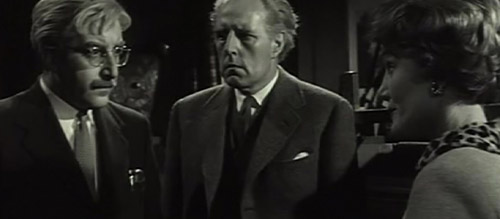The Battle of the Sexes (1960) Review
This film was written exclusively for The Film Magazine by Mark Carnochan.
The Battle of the Sexes (1960)
Director: Charles Crichton
Screenwriter: Monja Danischewsky (based on a short story by James Thurber)
Starring: Peter Sellers, Constance Cummings, Robert Morley
Taking a look back at Charles Crichton’s The Battle of the Sexes, one thing immediately stands out: the backdrop of Edinburgh city centre. Even today, some six decades later, it’s surprisingly rare for a film to take place in Scotland’s capital city, yet director Charles Crichton uses the city as such a beautiful backdrop for the story to play out in front of that it makes one wonder why films are not shot in the capital more often.
Peter Sellers leads the cast as Mr. Martin, a timid accountant for a tweed weaving company, whose life is turned upside down when Robert MacPherson (Robert Morley) arrives in Scotland to run the business that he inherited from his father. With him is Angela Barrows (Constance Cummings), an American Business Analyst who threatens Mr. Martin’s very way of life.
The title to The Battle of the Sexes is somewhat misleading, the film’s narrative playing out as more of a battle of ideals than any gendered confrontation. Mr. Martin represents the old school of thought and Ms. Barrows the new; the tale is one of traditional Scotland versus contemporary America.
Given the time in which the movie was released, it’s a breath of fresh air to see the screenplay take a more witty approach not only as regards its dialogue but also the conflict between Barrows and Martin. Not simply a tale of men against women, nor a series of sexist jokes towards Barrows due to her gender, The Battle of the Sexes is a film that delves into both characters’ psyches – their ways of life and how far they are willing to go to protect them.
This approach allows both characters to be fleshed out incredibly well – their intellect on display through their retaliations to one another’s actions, and their personalities shown through their reactions to each other’s ways of life – making for a strong ideologically investigative backbone to the piece.
Peter Sellers is excellent as the timid Scotsman Mr. Martin. Despite his fame (having played some of the most famous characters of all time such as Inspector Jacques Clouseau and Dr. Strangelove) Sellers is unrecognisable in the role, being seen as the character rather than the man playing him. Every little mannerism made by the actor is clearly thought out by Sellers in order to flesh out the character as much as possible.
As for the man who would lead the production behind the camera, Charles Crichton, The Battle of the Sexes works as a platform for him to further solidify himself as a master of slapstick. Most impressive is Crichton’s blocking, capturing each actor’s inner thoughts through movement, as well as managing to create some of the funniest moments put to screen that decade. One particular scene in Ms. Barrows’ apartment is sure to have you on the edge of your seats one minute and then rolling on the floor laughing the next.
The film only really unravels towards the end when Crichton dangles a moment of progression for Sellers’ character that could have promised a touching conclusion but instead unravels into something else entirely, the character regressing and the catharsis of the movie feeling less prevalent per the result. It’s a moment that changes the perception of Mr. Martin’s actions until this point and throws the entire meaning of the movie into question. The moment is just as funny as the rest of the film, and the remaining runtime still promises laughs, but it simply does not stick the landing. Were it not for these final ten minutes, this film would have been a perfect comedy.
The Battle of the Sexes marks an important moment for Scottish Cinema. Before this 1960s hit, the most successful Scottish film had been 1949’s Whiskey Galore!, and before that Alfred Hitchcock’s The 39 Steps or Laurel and Hardy’s Bonnie Scotland – two films that, whilst set in Scotland or following Scottish themes, had minuscule shooting in the country. In spite of the lack of Scottish creatives taking part in the film’s production, nor any Scottish actors in either of the lead roles, the star power that Sellers brings to the picture, as well as the quality brought by Crichton and the spectacular backdrop that is Edinburgh city in 1960, is difficult to disagree with.
20/24
Written by Mark Carnochan
You can support Mark Carnochan in the following places:
Twitter – @MarkJurassic


